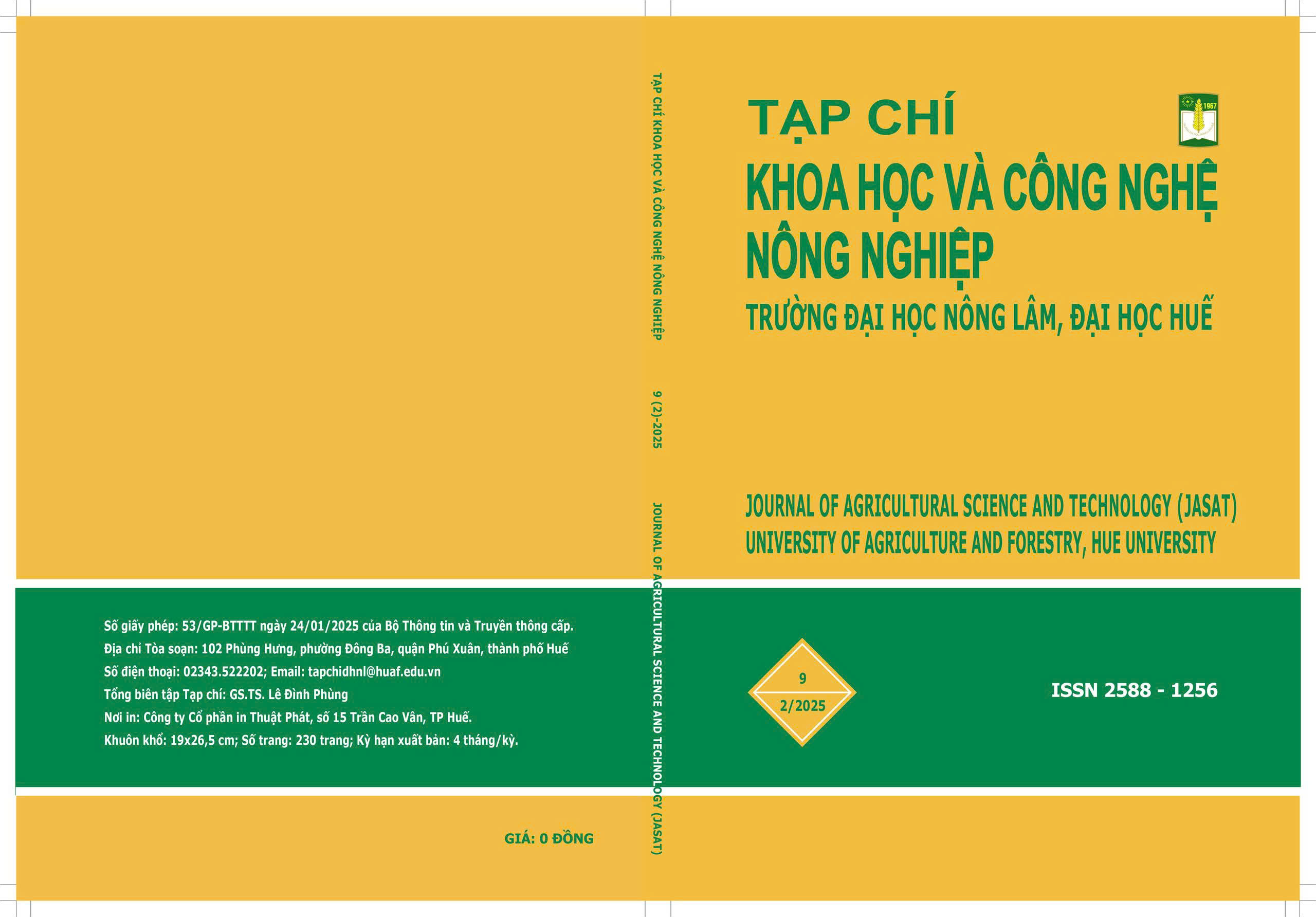##plugins.themes.huaf_theme.article.main##
Tóm tắt
Trong bối cảnh vừa phải ứng phó với những tác động tiêu cực từ việc đốt rơm rạ gây ô nhiễm môi trường, vừa tìm kiếm giải pháp phát triển nông nghiệp bền vững, nghiên cứu này được thực hiện nhằm đánh giá việc quản lý rơm rạ thông qua sản xuất phân bón hữu cơ của người dân tại huyện Tân Hưng, tỉnh Long An. Dữ liệu thu thập từ phỏng vấn 67 hộ sử dụng rơm rạ làm phân bón hữu cơ và 23 cán bộ lãnh đạo địa phương từ tháng 10 đến tháng 12 năm 2023. Kết quả cho thấy những ưu điểm trong mô hình sử dụng rơm rạ làm phân bón hữu cơ so với việc đốt rơm rạ ngoài đồng về các khía cạnh kinh tế, xã hội và môi trường. Chi phí để sản xuất 1 tấn phân bón từ rơm rạ cần 4.191 ngàn đồng và tạo ra 4.320 ngàn đồng doanh thu, mang lại lợi nhuận 129 ngàn đồng. Kết quả mô hình trồng lúa kết hợp bón phân bón hữu cơ đạt lợi nhuận là 78,75 triệu đồng/ha/năm, cao hơn mô hình trồng lúa chỉ sử dụng phân vô cơ là 8,35 triệu đồng/ha/năm. Kết quả phân tích SWOT đã chỉ ra một số chiến lược trong phát triển phân bón hữu cơ tại địa phương như khuyến khích doanh nghiệp và nông hộ tham gia sản xuất phân bón hữu cơ từ rơm rạ, đồng thời xây dựng chính sách hỗ trợ phù hợp để thúc đẩy sản xuất và mở rộng thị trường phân bón hữu cơ thông qua chiến dịch tuyên truyền sử dụng sản phẩm vì môi trường.
##plugins.themes.huaf_theme.article.details##
Tài liệu tham khảo
Cục Trồng trọt. (2023). Sổ tay hướng dẫn quản lý rơm rạ theo hướng nông nghiệp tuần hoàn và phát thải thấp ở Đồng Bằng Sông Cửu Long. Bộ Nông Nghiệp và Phát Triển Nông Thôn.
Hoàng Anh Lê, Nguyễn Thị Thu Hạnh và Lê Thùy Linh. (2013). Ước tính lượng khí phát thải do đốt rơm rạ tại đồng ruộng trên địa bàn tỉnh Thái Bình. Tạp chí Khoa học Đại học Quốc gia Hà Nội: Khoa học Trái đất và Môi trường, 29(2), 26-33.
Nguyễn Hùng Cường, Nguyễn Võ Kiên, Võ Vân Hà, Phạm Thị Thu Hiền và Hoàng Thị Ánh. (2022). Tiềm năng và phương pháp tái sử dụng phế phụ phẩm rơm rạ làm nguyên liệu hữu cơ, phân bón hữu cơ phục vụ phát triển nông nghiệp bền vững ở vùng đồng bằng sông Hồng và đồng bằng sông Cửu Long. Tạp chí Khoa học Đất, 66, 39-51.
Nguyễn Thu Huyền. (2022). Tài liệu hướng dẫn quản lý chất thải rắn nông nghiệp cho cán bộ quản lý, giảng viên cơ sở giáo dục đại học khối nông - lâm - ngư nghiệp. Đại học Thái Nguyên.
Nguyễn Thế Đặng. (2011). Giáo trình đất và dinh dưỡng cây trồng (252 tr.). Nhà xuất bản Nông nghiệp.
Nguyễn Trung Dũng và Vũ Thị Hồng Nhung. (2018). Bàn về quản lý tổng hợp rơm rạ sau thu hoạch. Khoa học Kỹ thuật Thủy lợi và Môi trường, 63(12), 135-143.
Phạm Văn Khôi Và Hoàng Mạnh Hùng. (2020). Giáo trình Kinh tế nông nghiệp. Nhà xuất bản Đại học Kinh tế Quốc dân.
Tạp chí Công Thương. (2024). Nông dân thu bộn tiền từ máy cuốn rơm. Khai thác từ https://tapchicongthuong.vn/magazine/nong-dan-thu-bon-tien-tu-may-cuon-rom-112045.htm, ngày 15/05/2024.
ESCAP UN. (2018). Status of straw management in Asia-Pacific and options for integrated straw management. Retrieved from https://www.un-csam.org/sites/default/files/2021-06/StatusOfStrawMgr.pdf
Mishima, S. I., Kimura, S. D., Eguchi, S., & Shirato, Y. (2012). Estimation of the amounts of livestock manure, rice straw, and rice straw compost applied to crops in Japan: A bottom-up analysis based on national survey data and comparison with the results from a top-down approach. Soil Science and Plant Nutrition, 58 (1), 83-90.
OCED. (2009). OECD Factbook 2009: Economic, Environmental and Social Statistics. OECD Publishing, Paris, DOI: https://doi.org/10.1787/factbook-2009-en.
Saini, A., Sharma, P. & Iqbal, T. (2023). A Study on Knowledge Level of Farmers Regarding Paddy Straw Management in Punjab, India. Asian Journal of Agricultural Extension, Economics & Sociology, 41(2), 26-30. DOI: https://doi.org/10.9734/ajaees/2023/v41i21844.


